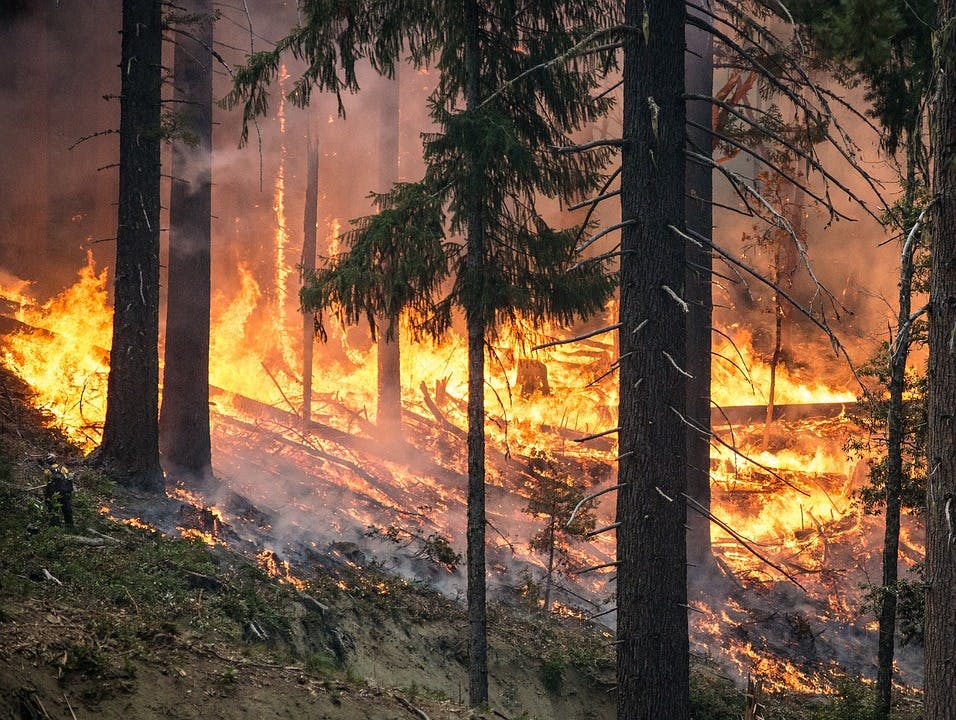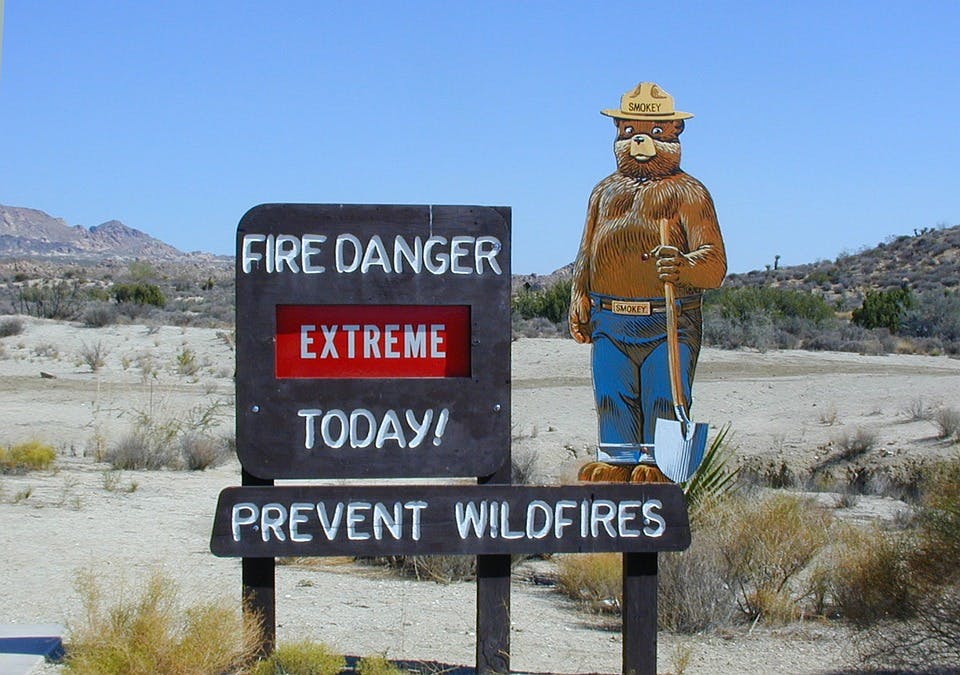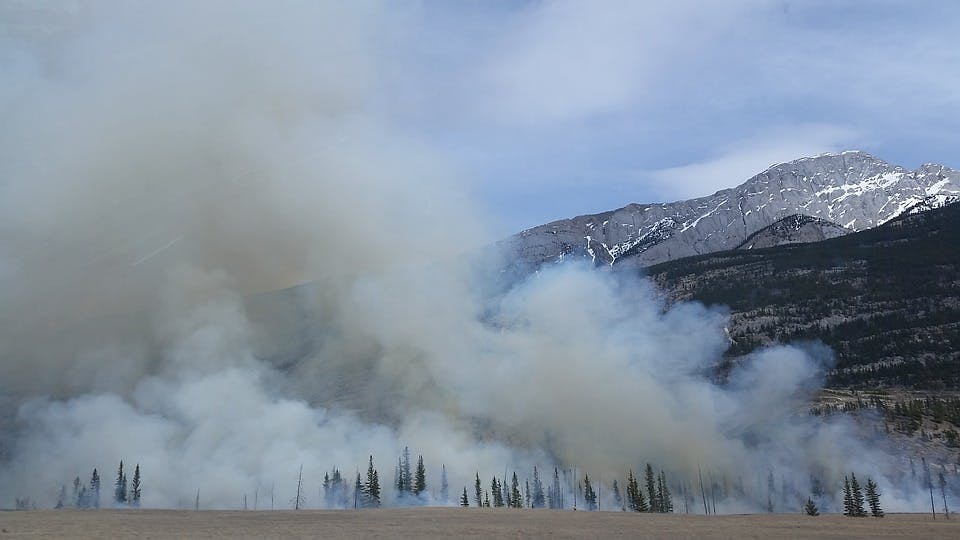Forest Fires and Smoke Pollution
It’s here. The dreaded fifth season of the West: forest fire season. I witnessed it myself when driving south on 395 toward Spokane and happened to pass several fire fighters doing their best to stop a grass/brush fire from becoming a monstrous forest fire. The often unsung heroes of our region succeeded and saved land, homes, and countless lives, both human and animal.
For those who live in lush, green areas of the world, forest fires may be something you only hear about on the news. They look bad, of course, like any natural disaster, but much like those other natural disasters, you can’t truly understand the horrors they inflict upon their victims until you become a victim yourself.

Watching as tens of thousands of acres of forest burn. Waking up to an orange sky with the sun little more than a hazy dot above. Trying to breathe as the air quality goes from green to dark red (normal to very hazardous) in a matter of days if not hours. Having to keep your children inside for weeks or even a month because it’s dangerous for them to breathe the outside air.
While we can’t prevent all forest fires, we can certainly do our part to help prevent some of them. That’s why we’d like to share a little review of what you can do to keep our lands safe, things to remember in case of a fire, and what to do when the air quality starts to decline.
Preventing Forest Fires
- Always check for burn bans in the area before lighting a fire. Check with local authorities for burning restrictions and restrictions on things like chainsaws and other outdoor power tools.
- Do not park vehicles in dry, grassy areas. Heat from the exhaust system can start fires.
- Be sure recreation vehicles have working spark arrestors.
- When starting a campfire or working with engines or hot tools, always have a shovel and water nearby.
- When finished, never leave a smoldering fire unattended. If it’s too hot to touch the ashes, it’s too hot to leave.
- Never use fireworks or other incendiary devices in illegal areas and never during burn bans.
- Always set tools, engines, and other hot devices in nonflammable areas where they can’t ignite dry grasses.
- Stick around for at least an hour after finishing your outdoor work to be sure you spot and stop any smoldering or fires that may start.
Remember, here in Washington the DNR is required by state law to investigate and prosecute anyone who starts a wildfire!

In Case of Forest Fire
It’s always smart to have a plan, and in this region having a proper forest fire evacuation plan may save your life. First, make sure you know how to get information about local wildfires. Have the fire department’s phone number, the local authorities, news stations websites, and more to be sure you have the most accurate and up-to-date information about fires in the area and evacuation orders. Always be sure to listen to evacuation orders and follow specified routes. Forest fires can shift unexpected with the winds and the last thing you want is to be caught on a narrow stretch of road with a fire coming at you.
If there is an evacuation order issued … what do you do? What do you grab? These aren’t questions you want to be figuring out while a fire approaches. Come up with a list and post it where everyone in the family can find it. On it, include things like important papers to get (and where they are located) as well as mementos like photo albums or family heirlooms. Create a plan for any pets or livestock you have on the property. Give everyone a job and make sure they know how to do it – Dad will load the horses on the trailer, Mom will grab the important papers, Son will collect the pets, and so on. And practice! Practice, practice, practice! It’s one thing to have a plan, but it’s another entirely to be able to do it under pressure. Run through the entire thing, all the way to loading the vehicles and driving away, to be sure everyone understands what needs to be done.
It may seem silly now, but when the evacuation order comes in and the smoke is billowing over your home, you’ll be happy that you practiced.
For more information on how to prepare for a wildfire, the Washington DNR offers this pdf: How To Prepare for a Wildfire.
Smoke Safety
First, it’s important to know how to check for local air quality conditions. The local news will often mention any changes, but for those traveling to new areas, you can use websites like AirNow and the Pacific Northwest Air Map. To better understand what the air quality conditions mean, the Washington Department of Ecology offers this guide: WAQA Table. Forest fire smoke is damaging for everyone, but certain individuals may be at higher risk for developing serious complications. These groups include the young and elderly, those with asthma or other respiratory illness, diabetes, heart or lung disease, stroke survivors, or those with colds.
Smoke Exposure Symptoms
- Sore Throat
- Headaches
- Burning Eyes
- Coughing
- Wheezing
- Shortness of Breath
- Chest Pain
Reducing exposure to the smoke by remaining indoors with the AC running and outdoor air intake closed off may reduce symptoms. For serious symptoms like shortness of breath or chest pain, contact 911.
When air quality dips, be sure to follow these tips to ensure you don’t suffer complications.
1. Reduce your amount of strenuous activity.
2. Keep windows and doors closed (but keep an eye on indoor temperatures to be sure you don’t overheat inside).
3. Run your air conditioner (set to recirculate the air) regularly and change the filter often.
4. Use an air cleaner with a HEPA filter.
5. Don’t add to indoor pollution by burning candles or incense.
6. Don’t vacuum unless it has a HEPA filter as it will disturb dust particles inside your home.
7. Limit driving in smoky conditions.
What should you do if you don’t have air conditioning and the air quality drops? Consider going a friend or family member’s house who does have AC. If that isn’t possible, take other measures to reduce the temperature inside your home including pulling the shades and drapes on all the windows, using portable fans, and checking the air quality often so you can open the windows as soon as possible.
For more information on smoke safety, check out the resources provided on the Department of Health’s website: DOH Washington.

